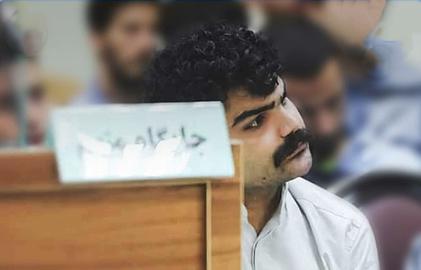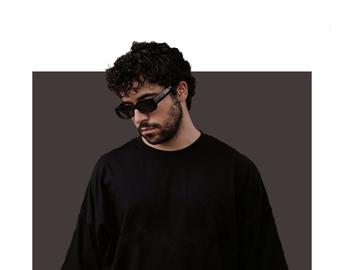As dramatic events began to unfold in Iran in 1978, photojournalists and reporters took to the streets to document history in the making. For many, the chief chronicler of Iran’s Islamic Revolution is the legendary photographer Abbas, whose photographs recorded the people, the events and the extraordinary emotions that swept across the nation, and throughout the world.
To celebrate the launch of an exciting new project about Abbas’s life and work, IranWire and Journalism is Not a Crime talked to journalists who covered the revolution about their memories of the incredible events in Iran — and how they see the country today.
* * *
Channel 4 News anchor Jon Snow has won many awards for his work as a journalist. He has travelled all over the world to cover breaking news, from the fall of the Berlin wall and the release of Nelson Mandela, to the earthquake in Haiti and the terror attacks in Paris. Yet Snow remembers the 1979 Iranian Revolution as “an experience like no other.” In an interview with Journalism Is Not A Crime, he looks back at the days the revolution triumphed – and the brief period of excitement and freedom that followed before the Islamic Republic was established.
What was it like being in the middle of what turned out to be a historic event?
The revolution was an experience like no other. There were literally millions of people on the streets. It was unlike anything I’ve ever witnessed. You couldn’t really move. And actually the process of covering it wasn’t very easy because you just couldn’t get to the TV station to send your reports, so most of the time we had to ship them by air from the airport.
The exuberance, the excitement, the belief that change had come permanently, and then the gradual evolving of what appeared initially to be secular to becoming an Islamic revolution was also fascinating to observe.
How would you describe Iran at the time of the victory of the revolution?
The atmosphere was intoxicating. Every morning we would go out and we would be greeted on the streets, and people who knew any English would speak with us and tell us of their hopes and how relieved they were that the Shah was finally gone. It was in the fullest sense a popular revolution. There were just so many people on the streets, particularly huge numbers of women. It was amazing. I don’t think I have been in a revolutionary situation before where I have seen so many women on the streets.
It was clear that every sector in society was affected by it. At the same time you could go to north Tehran where most of the richer people live. And once you got through the gates, you could be forgiven for wondering if there was any revolution on at all. They lived a different life; people in that area were unbelievably wealthy. Obviously they had commercial and business interests in the rest of it. I think they were just sitting behind their front doors waiting for it all to settle down.
Because of the scale of the revolution, because it was so widespread, so big, so many people on the streets, it was very difficult to get a handle on what exactly was happening; except it was clear it was a revolution. There were a number of very accessible ayatollahs, and we had people who had made it their business to guide us through what was happening. But it was impossible to know how it was going to turn out. At first the political party, the Tudeh Party, and others were claiming it for themselves, but very quickly you could detect the Islamization of the revolution – there were many more clerics on the streets, preaching in the streets. Increasingly, Islamic-led institutions were accrediting us as press people. And basically they took complete control of the whole thing. Within 10 days to two weeks it became clear that it was the world’s first Islamic revolution.
It was a turbulent time, but I never felt unsafe.
How did you feel changes in Iranian society unfolded after the collapse of the Shah’s regime?
Suddenly you were free to travel anywhere, nobody would stop you. We traveled a lot. We were never prevented from moving about and we could film whatever we wanted to film. For example I went to Kurdistan in Sanandij. Baggy trousers had been banned [under the Shah]. They couldn’t wear Kurdish clothes, they couldn’t be taught in the Kurdish language. And suddenly, all that had changed. The baggy trousers were back; people were being educated in Kurdish – very quickly. This freedom lasted for the first few months of the revolution, but certainly no longer than a year.
Just three or four days after the revolution, I managed to get into the early warning station on the Caspian Sea, which was the American facility that had been monitoring Russian Atomic nuclear tests in the Urals. Nobody stopped us. We thought that they were booby-trapped, so we threw stones in to test whether we could go in or not, and we went in. It was clear that the Americans who had been there had fled without even packing a suitcase. There was still breakfast on the tables and there were still pajamas on their beds. That kind of gives you an idea of how instant the revolution was.
How was it to work as a journalist at the time of the revolution?
Initially it was completely free, partly because it was chaotic. You did get arrested occasionally, but fundamentally it was okay. As long as you were prepared to take a risk – your ignorance might get you into trouble. Beyond that it was fine.
The jam of people on the streets was the biggest impediment to reporting. That was a huge difficultly – getting from A to B – there were no short cuts. If the streets were full of people there was nowhere else you could go, you just had to get out of your car and walk.
Later on it became much harder to work, there were much more controls, and you would have to be accompanied by somebody from the new regime’s press relations department.
How did you start to see changes in society towards an Islamic Iran?
There was more black in the clothing; more pronounced hijabs. Alcohol disappeared. Before the revolution you could get a drink in bars and so on. All that went. I even witnessed the manager of the intercontinental hotel I was staying at tipping bottles of claret down the drains. It all happened very quickly. The mullahs, the clerics, imposed their will quite quickly and of course the Revolutionary Guards began to consolidate their grip on security.
Is there any specific moment of Iran at the time that has stuck in your memory?
The hostage crisis was extraordinary. We went down to American Embassy minutes of it being taken [November 4, 1979] – and you could still walk in. The first thing I saw was on the wall: “Marg bar Carter, Marg bar Shah” (Death to Carter, Death to the Shah). We were shown the hostages and we were able to interview students who were holding them. The students were not particularly organized, initially. They didn’t really know what they were doing; they had just managed to break into the embassy and seize everybody in there.
It was my impression that they did not expect to hold the place more than two or three hours. But of course the Americans wouldn’t speak to them. Then after a couple of days the Algerians came up with a deal to get the Americans out, and the Americans refused to accept it. We never thought it would last 444 days. No one had expected it would last that long.
Why is the Iranian Revolution an important event that people should care about today?
We should care about it, fundamentally, because America and other countries that followed America diplomatically rejected the revolution. A huge period of very important and valuable relationships was stopped. And Iran over time became what we could call an aporia state — and a lot of opportunities for peace and all sorts of other things were very badly affected by this. The isolation of Iran was very damaging to the region and very damaging to the issues of peace.
For more stories and photos from the revolution, please visit our new site Abbas and the Revolution and follow us on Facebook.
Related articles:
“The revolution was a rollercoaster of emotions”
A Struggle for the Heart and Soul of the Revolution
Abbas and the Revolution – a Unique Look at Iran over the Last Five Decades
visit the accountability section
In this section of Iran Wire, you can contact the officials and launch your campaign for various problems

























comments